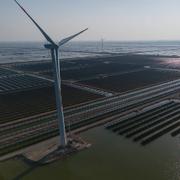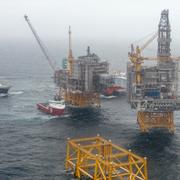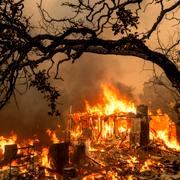
FN-rapport: Världen går mot 2,7 graders uppvärmning
Världen går mot 2,7 graders uppvärmning, enligt en ny FN-rapport om globala utsläpp. Den visar att 1,5-graders målet inte kommer att uppnås, skriver AFP.
"Vi närmar oss en katastrof", säger FN-chefen António Guterres.
Enligt FN:s klimatpanel IPCC behöver utsläppen av växthusgaser vara runt 45 procent lägre 2030 än 2010 för att kunna nå målet på 1,5 grader. Enligt rapporten väntas i stället utsläppen öka med 16 procent jämfört med 2010.
bakgrund
Parisavtalet
Wikipedia (en)
The Paris Agreement (French: Accord de Paris), often referred to as the Paris Accords or the Paris Climate Accords, is an international treaty on climate change, adopted in 2015. It covers climate change mitigation, adaptation, and finance. The Agreement was negotiated by 196 parties at the 2015 United Nations Climate Change Conference near Paris, France.
The Paris Agreement was opened for signature on 22 April 2016 (Earth Day) at a ceremony in New York. After the European Union ratified the agreement, sufficient countries had ratified the Agreement responsible for enough of the world's greenhouse gases for the Agreement to enter into force on 4 November 2016. As of July 2021, 191 members of the United Nations Framework Convention on Climate Change (UNFCCC) are parties to the agreement. Of the six UNFCCC member states which have not ratified the agreement, the only major emitters are Iran, Turkey, and Iraq (though the president has approved that country's accession). The United States withdrew from the Agreement in 2020, but rejoined in 2021.
The Paris Agreement's long-term temperature goal is to keep the rise in mean global temperature to well below 2 °C (3.6 °F) above pre-industrial levels, and preferably limit the increase to 1.5 °C (2.7 °F), recognising that this would substantially reduce the impacts of climate change. Emissions should be reduced as soon as possible and reach net-zero in the second half of the 21st century. It aims to increase the ability of parties to adapt to climate change impacts, and mobilise sufficient finance. Under the Agreement, each country must determine, plan, and regularly report on its contributions. No mechanism forces a country to set specific emissions targets, but each target should go beyond previous targets. In contrast to the 1997 Kyoto Protocol, the distinction between developed and developing countries is blurred, so that the latter also have to submit plans for emission reductions.
The Agreement was lauded by world leaders, but criticised as insufficiently binding by some environmentalists and analysts. There is debate about the effectiveness of the Agreement. While current pledges under the Paris Agreement are insufficient for reaching the set temperature goals, there is a mechanism of increased ambition. The Paris Agreement has been successfully used in climate litigation forcing countries and an oil company to strengthen climate action.
Omni är politiskt obundna och oberoende. Vi strävar efter att ge fler perspektiv på nyheterna. Har du frågor eller synpunkter kring vår rapportering? Kontakta redaktionen



